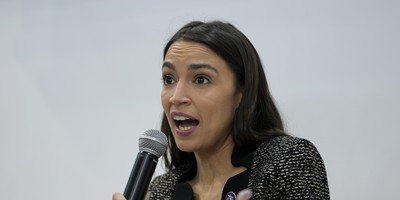“Today, government at all levels consumes 37 percent of the total economy, or GDP,” Republican presidential nominee Mitt Romney said earlier this month. “If Obamacare is allowed to stand, government will reach half of the American economy.”
Half. In a land of supposedly limited government, can what the father of our country called “a dangerous servant and a fearful master” really constitute that much of the entire economy?
Say it isn’t so.
Glenn Kessler’s “Fact Checker” column at the Washington Post did just that. He slapped Romney’s statement with four “Pinocchios,” the worst possible condemnation reserved for those telling the biggest “whoppers.”
Yet, Kessler acknowledged Romney’s first point. In 2011, local, state and federal “government expenditures amounted to 37.34 percent of the gross domestic product.” That percentage is expected to climb to just over 39 percent by 2020.
Sure, the columnist quibbled with that percentage, arguing that the current figure would be lower if the economy were not so depressed. (Or recessed?) But that doesn’t contradict the veracity of Mr. Romney remarks.
Kessler also insinuates that it was somehow unfair to lump local, state and federal governments together. But, what else would “government at all levels” mean?
Then, Kessler notes that much of government spending constitutes transfer payments such as Social Security and offers the analysis of Henry J. Aaron of the Brookings Institution, who contends, “Collecting taxes from one private party and transferring the revenue to another private party is not government ‘consuming.’”
Recommended
Well, it is if you’re the party handing your hard-earned dough over to government.
Budget expert Richard Kogan, at the liberal Center on Budget and Policy Priorities, suggests that government interest payments shouldn’t count as “government consumption,” either. It is most clearly the cost of past consumption, however.
Granted, Kessler is correct that “Romney goes way too far.” Romney counts private medical expenditures, which he claims will supposedly account for 10 percent of the projected 2020 economy. Romney’s campaign spokesperson argues Obamacare in part mandates that spending and thus the 10 percent is part of government’s “reach.”
Certainly, the vast majority of all private payments for medical care — the 10 percent — would happen with or without Obamacare. So Romney’s figure does exaggerate. As the Cato Institute’s Daniel Mitchell offered, “I agree that private health-care outlays are heavily influenced by government policy, but that was already the case before Obamacare. Yes, Obamacare will make it worse, but I don’t think it is justifiable to count that 10.03 percent of GDP as private before Obamacare and government after Obamacare.”
Still, what jumps out at me throughout this discussion is that government is commandeering 37 or 39 percent of our economy!
That’s a whoppingly large amount.
Moreover, Kessler argues that, under Romney’s notion of government reach, “a wide variety of industries, such as banking or housing, should also be counted as part of this government-controlled economy.”
Well, yes.
Government spending accounts for nearly 40 percent of America’s GDP. Plus, government heavily regulates and interjects itself into major parts of the remaining private sector.
“Romney should drop this line from his speeches,” says Kessler. “No amount of tweaking will get it right.”
No amount?
Tweak it, Mitt, but don’t drop that line. You’re on to something. What’s really whopping is government’s massage size and scope and reach. That should be the central issue of this campaign.

























Join the conversation as a VIP Member